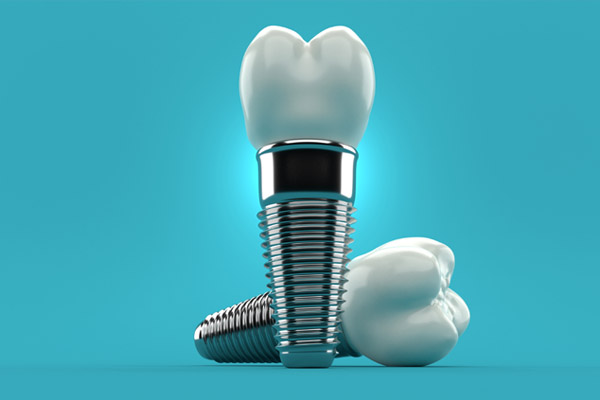When Dental Bonding Is Used by Your General Dentist

Dental bonding is a reversible dental procedure that involves using a composite resin material to rebuild and restore teeth. The composites used can be matched with the color of the patient’s teeth, allowing restorations made with them to blend in.
Dental bonding has cosmetic and restorative uses in dentistry. Unlike other popular restorations dentists use, its application does not require making permanent alterations to the teeth being treated, making the procedure fully reversible.
Reasons a general dentist might recommend dental bonding
Some of the reasons why a general dentist might recommend dental bonding for some of their patients include:
1. To fix minor chips and breaks
Severe breaks that impact a tooth’s pulp chamber often require procedures like root canals and crowns to restore them, but minor breaks can be fixed with composite resin. The procedure often involves a general dentist applying several layers of composite on the tooth being treated, covering up any breaks or chips.
2. To cover up stains and discoloration
Teeth whitening treatments are typically the first option explored when it comes to improving the aesthetics of teeth, but some stains caused by issues like tetracycline antibiotics and tooth decay do not respond to these treatments.
Restorations like composite bonding, veneers, and crowns are typically explored when this occurs. Composite bonding is the most economical option, and it can restore the aesthetics of discolored teeth for up to ten years.
3. To fill gaps between teeth
Composite bonding can also be used to close up unnatural gaps between teeth. Treatments usually involve using composite layers to widen the two teeth closest to the gap, closing the space between them.
4. To rebuild the shape of teeth
Composite bonding can be used to improve the shape of deformed teeth. Layers of composite are applied to the patient’s teeth and reshaped to get the desired aesthetics. The composite resin is then hardened with a curing light.
5. To treat cavities
Composite bonding is becoming the standard way to fill up cavities as a growing number of patients choose to avoid silver amalgam fillings because of their mercury content and poor aesthetics. Mercury is now known to be toxic, making composite fillings the healthier alternative.
Restoring a tooth with composite bonding requires the removal of less tooth material, so it is also less invasive than getting traditional amalgam fillings. Composite restorations also lead to better aesthetics since they can be color-matched with the patient’s teeth, while traditional fillings have a dark grey color that makes them easy to spot.
6. To protect exposed teeth roots
Gum disease is one of the leading dental problems, and it leads to symptoms like receding gums. This leaves teeth roots exposed to the acids made by microorganisms in the mouth. Unlike the visible part of teeth, called the crown, teeth roots do not have an outer layer of enamel to protect them against acids, making them considerably more vulnerable to tooth decay.
What to expect when getting composite bonding
Dental bonding often starts with a general dentist sitting down with a patient to discuss their cosmetic goals. Diagnostic tests like X-rays might be requested to ensure composite bonding is the optimal way to address the patient's concerns. Existing issues, like tooth decay, are addressed before proceeding with the bonding.
Here are the different steps that occur during the procedure:
- The general dentist uses a shade guide to choose composites that match the patient’s teeth
- The tooth being treated is prepared for the procedure by roughening it with a liquid called an etching solution. This step makes it easier for the bonding material used to stick to the patient’s teeth
- The composite, which feels a lot like putty, is applied to the patient’s teeth layer by layer, molded to the desired shape, and hardened with ultraviolet light. The curing light bonds the composite to the patient’s tooth
- The tooth is polished, and any modifications needed are made to finalize the procedure. The entire treatment can take anywhere from 30 to 60 minutes
Restoring teeth with composite resins is not a painful experience, and anesthetics are typically not required. The exception would be if the general dentist needs to remove decayed tooth material before restoring the tooth with composites.
Teeth restored with composites do not require any special care. Brushing with a soft toothbrush twice a day and flossing daily is all the care teeth that are restored with composite need. Bonding restorations can last up to ten years with good oral hygiene.
You can transform your smile during a single visit
Give us a call or stop by our Huntsville clinic to set up an appointment with our general dentist if you are dealing with issues like tooth decay, discolored teeth, or chipped teeth.
Request an appointment here: https://www.smilesbydesignhuntsville.com or call Smiles by Design, PC at (256) 660-3233 for an appointment in our Huntsville office.
Check out what others are saying about our dental services on Yelp: Dental Bonding in Huntsville, AL.
Recent Posts
If you are looking to make improvements to your smile, you may want to consider dental bonding. This cosmetic dentistry procedure uses a composite resin material to make repairs to teeth and enhance the appearance of a person's smile. Bonding can be used to correct various cosmetic issues, including chips, gaps, discoloration, and even misshapen…
Dental bonding is a common procedure in which the dentist uses a tooth-colored material called resin to fill in gaps and repair cracked or chipped teeth. Though bonding is a safe, low-maintenance procedure, it is not appropriate for all teeth or all patients who need a tooth repaired. When performed correctly, this option is a…
Dental bonding is a common dental service that many dentists offer right in their offices. What exactly does dental bonding involve? Bonding, also known as tooth veneers, involves applying a special resin to the front of your teeth to make them look whiter and brighter. Your dentist will take an impression of your teeth during…
Dental bonding is a fast and effective way to give your teeth a healthy look. Over time, staining happens. Diet, lifestyle, and medical conditions can cause dental discoloration. Over-the-counter teeth-whitening products may not provide any results at all. In-office teeth whitening may prove ineffective for deeper staining. If you want to learn how dental bonding…


